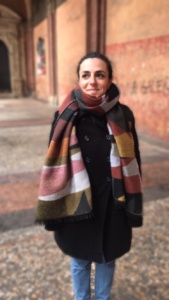This website uses cookies so that we can provide you with the best user experience possible. Cookie information is stored in your browser and performs functions such as recognising you when you return to our website and helping our team to understand which sections of the website you find most interesting and useful.

Anna Chrysopoulou is a volunteer with WEAll Scotland – she has written this blog to mark Challenge Poverty Week 2019.
“What does economic growth, measured by GDP[1], tell us about essential issues such as poverty and social inequalities?
Technically nothing. As long as the economy is growing in terms of production and consumption, the country is considered successful. When it comes to the distribution of wealth, are we still successful when poverty and social discontent are rising?
Having a job and yet struggling financially
Although GDP ignores factors such as pay gaps, unpaid work and inequalities, what it does measure is paid work. What if employment does not guarantee the route out of poverty?
Working or in-work poverty, which describes households who live in relative poverty even though someone in the household is in paid work, is a rising issue. The Scottish Government in 2015 issued a report which proved that the majority of working-age adults (52%) in Scotland are in ‘in-work’ poverty, and this figure has been gradually increasing. Indeed, in 2017/2018, working poverty increased to 60% (representing 390,000 working-age adults after housing costs), which means that more people are locked in daily struggle.
Let’ s add now to the conversation social inequalities. Our economy creates powerful currents that could easily pull any of us into poverty.
Women, ethnic minorities and disabled people are more at risk of poverty
Poverty in Scotland has a female face; women are more likely to be living in poverty compared to men. In 2015-2018, the poverty rate for single working-age women was higher than for single adult men, whether they had dependent children or not. The same relation is found to pensioners, as the relative poverty rate is higher for single female pensioners than male. Apart from the pay gap, one of the reasons for this difference is that women are the majority of low paid workers, due to what is usually considered “women’s work”, such as cleaning, care and retail, being underrated in the labour market.
These figures follow a global trend which shows that it is harder for women to escape poverty. And of course, not to mention unpaid work, such as childcare and housework, which is not even taken into account. According to Oxfam, women do at least twice as much unpaid care work than men, with an estimated global value of $10 trillion, equivalent to one-eighth of the world’s entire GDP.
Social inequalities appear in terms of race and disability, as well. Relative poverty rates are higher where a family member is disabled[2] and are also higher for ethnic minorities. People from minority ethnic (non-white) groups are more likely to be in relative poverty from the ‘White- British’ group. A report in 2017 revealed that poverty in BME[3] communities is twice that of white communities, which is even worse for BME women as they are more affected by austerity. Unemployment levels in many ethnic groups, which is strongly related to poverty and is holding people down, are also higher than most of the Scottish population.
So when we aim to tackle poverty, inequalities ought to be considered thoroughly and comprehensively.
This evidence demonstrates that we cannot measure everything using economic growth and a monetary system. Living in poverty cannot be described only with numbers. It affects all aspects of one’s life, including those such as mental health that are not measured and therefore, are ignored.
For this reason, it is vital to redesign our current narrow economic system, which keeps failing to show the big picture and focus on people’s wellbeing rather than the economy itself. Scotland could lead the way on that.
Nicola Sturgeon, Scotland’s First Minister, stated in her recent TED talk that “the objective of economic policy should be collective well-being. What we choose to measure as a country matters. It matters because it drives political focus and public activity”.
A wellbeing economy that places people and the planet first is necessary. This wellbeing economy could be the solution for poverty and social injustice. It is based on the creation of a society that accounts for nature, distribution of resources and better quality of life for everyone. It aims at social, economic and environmental justice and suggests alternative business models, like the employee ownership model that as Sarah Deas, board member of WEAll and former director of CDS, explained: “fosters ‘predistribution’ of wealth with employees, while companies perform well in terms of productivity, inclusion and innovation”.
And as Katherine Trebeck and Jeremy Williams argued in their book The Economics of Arrival “Growth up to a certain point is important- and countries and people below their respective threshold points need more of it, as long as it is good quality and distributed well. After that point, however, societies need to become better at focusing on the quality of the economy instead of its size. Bricks and mortar are the material foundations of a house, but they are not what constitutes the warmth, welcome and comfort of a home- that stems from relationships, security and personalisation”[4].
Maybe this exactly how we should think of our economy.”
References
[1] GDP: Gross Domestic Product which measures the total value of all goods made, and services provided, during a specific period of time.
[2] Since 2012/2013, disabled people are identified as those who report any physical or mental health condition(s) that last or are expected to last 12 months or more, and which limit their ability to carry out day-to-day activities
[3] Black and Minority Ethnic
[4] Trebeck, K. and Williams, J. (2019). The Economics of Arrival. 1st ed. Bristol: Policy Press, p.71.
the discussion?
Let us know what
you would like
to write about!

